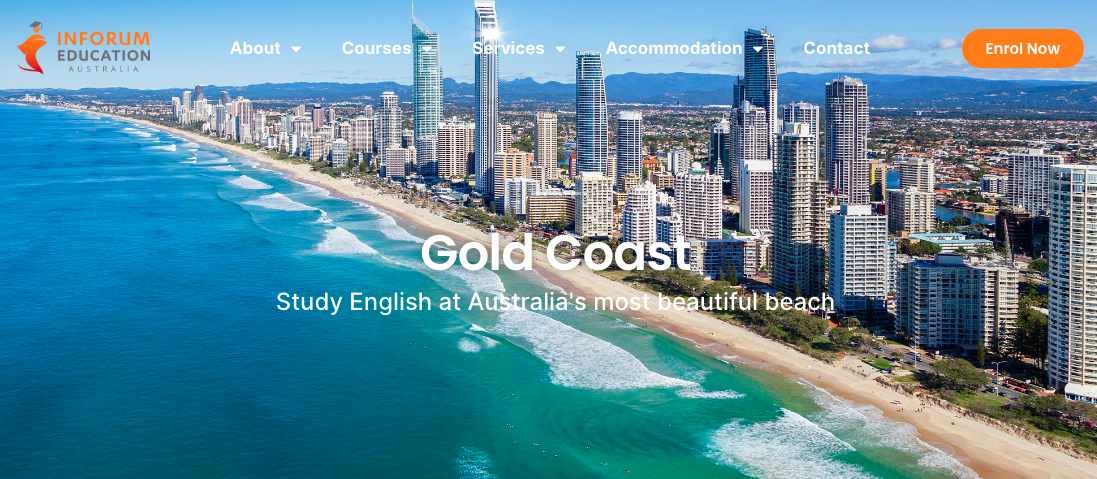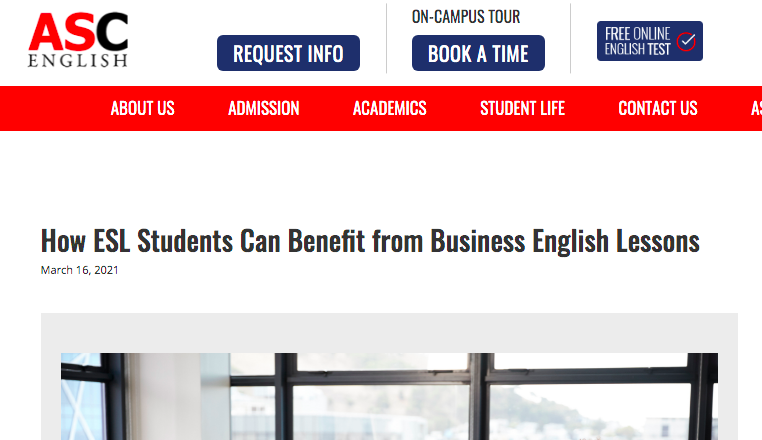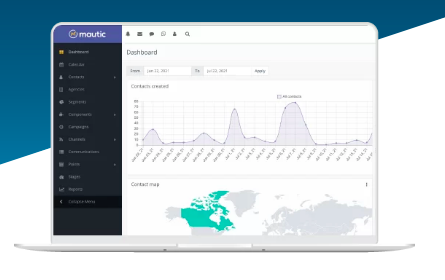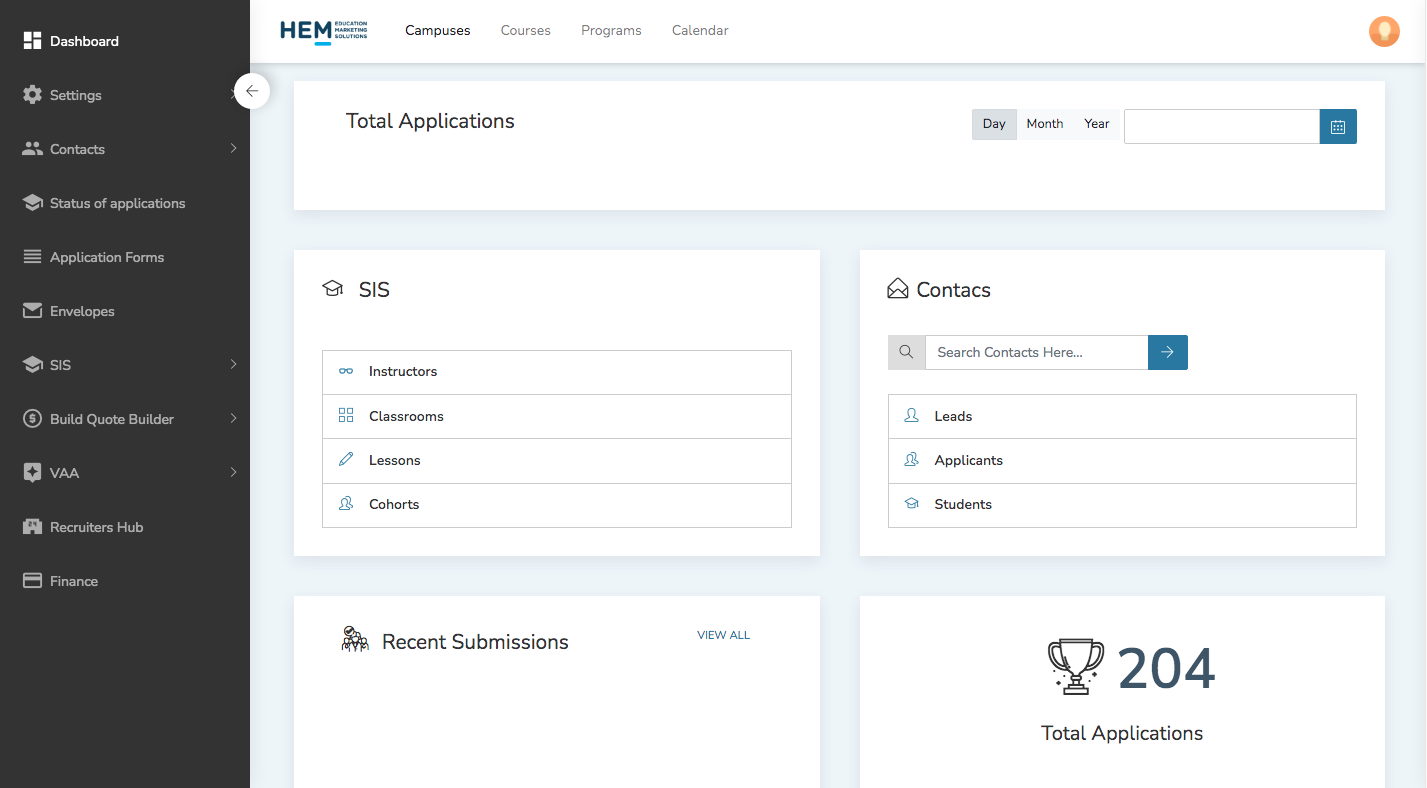How do I market my language school? This is a common question for language schools looking to increase bookings and improve their visibility on the international stage. The key is to create an ideal Language School Digital Marketing Plan. Effective marketing strategies can help you clarify who your prospective student audience is, craft messaging appropriate to them, and apply a more targeted approach to future marketing efforts.
For language schools, language school marketing ideas and specific tactics reliably produce excellent results for effective promotion and the gains that come with it when included in a marketing plan.
Are you curious about where to get started when marketing a language school?
Here’s a guide to help you produce an effective marketing strategy for your language school.
Identify Your School’s Personas for Your Language School Digital Marketing Plan
The first question you might be asking yourself is, what should be included in a digital marketing plan? A comprehensive digital marketing plan should start with a clear understanding of your target audience. Beyond personas, your school marketing plan should encompass key components like SEO, content marketing, social media strategies, paid advertising, and email marketing campaigns.
To begin with, your “persona” should provide a detailed description of the most important characteristics of these prospects, including their motivations, goals, challenges, and decision-making processes, and can be used to inform the messaging you create in your marketing efforts.
Here are some of the important qualities to consider when crafting your persona:
- The prospect’s motivations and goals for learning a new language
- Concerns or potential roadblocks the prospect might face
- How your ideal prospect is likely to research language schools
- Background information such as age, location, level of education, socioeconomic status, etc.
- Others who might influence the prospect (family, agents, guidance counsellors, etc.)
Why Are Qualities Important to Consider?
It is important to think about these qualities because they can be indicative of specific attitudes and behaviours that you might want to speak to in your marketing.
For example, suppose you develop a student persona of a high school student looking to learn a language for university study abroad.
In that case, your messaging must position your courses as a reliable pathway to further education.
Example: This persona example includes key demographic information such as age, gender, and location, which will be useful in developing targeted content for the language school.

Note that you do not need to limit yourself to only one persona.
A good school with a broad range of courses can expect to attract students of multiple backgrounds or demographics, and establishing different personas for different categories of students or parents can be a great way to ensure your messaging addresses their particular needs.
Remember, though, that establishing too many personas can defeat the purpose of creating them in the first place – not every applicant needs to match your personas exactly, or even at all.
Instead, the personas should serve as a guiding principle for communicating more efficiently with large groups of prospective applicants.
To achieve the level of focus that personas are meant to facilitate, start with just two or three at most.
How To Develop Personas in Your Language School Marketing Strategy
When starting to develop your personas, the best way to begin is often simply to get together with your recruitment team and any other relevant individuals within your organization.
You can collaborate by noting some of the obvious characteristics you have noticed in your student body or the characteristics of the kinds of students you want to attract.
You can take this concept further by issuing an anonymous survey to your student population, asking them questions to illuminate trends relevant to the above points.
Finally, looking at the source of your web traffic can help you identify potential target markets, perhaps indicating particular nationalities for which to consider creating messaging.
It is important to craft personas with student diversity in mind. Students often prefer to attend language schools with classmates from various nationalities, which encourages more peer-to-peer practice in the language of instruction. By developing personas that allow you to cast a wide linguistic net, you can take an important step toward addressing the needs of your enrollees.
Improving International SEO with Marketing for Language Schools
Organic search traffic is the bread and butter of many schools worldwide. By improving your website’s ranking in search results, you can gain a great deal of visibility and attention from prospective students, significantly boosting your student recruitment efforts.
Achieving good search engine rankings can depend on several factors, including the quality and relevance of your content, how easy your web pages are for search engines to crawl, their use of visual elements, and how well your site is optimized for mobile devices.
However, for language schools, which may need to use multilingual digital marketing to appeal to prospective students in various languages and locations, constructing a successful SEO strategy presents even more concerns.
While Google is the world leader in search and is the service for which most institutions worldwide will want to optimize, other regional search providers are also worth considering, depending on your target student market.
Here are a few of the main regional players you need to know about:
- Baidu: China’s most popular search engine, favouring URLs with Chinese characters, quick loading speeds, and minimal JavaScript and Flash.
- Yandex: Russia’s top search engine, with a significant presence in several Eastern European countries.
- Naver: The dominant engine in South Korea. It also includes social networking elements.
Generally, all of these search engines operate with the same principles of favouring high-quality, relevant content, but it’s important to consider the particularities of each one.
For best results, research international SEO or engage the services of experts well-versed in international Education SEO practices.
In addition, if you know a large proportion of your student base will communicate in a particular language, investing resources into developing multilingual web content can be a good idea.
Be sure to get your existing content translated professionally to ensure your message gets across properly and that clarity and value are preserved. A poor translation could well lead to miscommunication or cause native speakers of your language of translation to perceive your institution as being of poor quality.
Example: The Centre of English Studies offers numerous versions of its website in different languages, making engaging with and exploring its services easier for students from worldwide markets.


Source: CES
Driving Traffic to Your Language School’s Website with Content Marketing
One of the most effective ways to improve organic search rankings is to create web pages and blog posts with specific keywords and phrases integrated into their content. This strategy, a key component of content marketing for education, helps attract and engage prospective students by aligning your content with the terms they are actively searching for, thereby enhancing visibility and driving traffic to your site.
Over time, this can help draw more visitors to particular pages and improve their position in search engine rankings.
To start, it is essential to put some time into researching to determine which keywords you should be trying to optimize your web content for.
Tools like Google Keyword Planner, RankIQ, Moz Keyword Explorer, and SEMRush are popular options that can help you perform deep analysis and determine which keywords will best fit your website. Generally, the keywords you will want to optimize for will be:
- Relevant to your school and its course content
- Keywords for which you already rank but not especially highly
- Non-branded (your school’s name not included)
Crafting content for these keywords is as much an art as a science.
Use keywords to indicate what people look for from schools teaching your language.
Your content needs to include those keywords, integrate them naturally, and be built around them to create a message that answers the questions or meets the needs of those who searched for those keywords.
One good strategy for language schools looking to improve visibility is to create content around geo-localized keywords—or keywords that include a geographic area, such as “French language schools in Paris.”
This can help you draw in people who know they want to learn a language and where they want to learn it but aren’t sure about the specific institution.
Example: Inforum Education on the Gold Coast of Australia created a page promoting its appealing location.
This is a great way to excite prospects about attending Inforum Education and provides more opportunities to integrate location-specific keywords.

Source: Inforum Education
Use Persona Targets to Your Benefit in Your Language School Digital Marketing Plan
Your target personas for specific courses will also help steer your content creation efforts in the right direction.
For instance, if your school is running a language summer camp, it will most likely target parents who may be interested in learning about everything from the educational content of your course to the activities you offer for students to your safety and supervision policies.
Example: POINT3 Language Centre runs a regular blog with posts about topics that may interest potential students as they consider enrolling in a language training program.

Source: POINT3 Language Centre
Of course, regardless of the type of courses you are running, you need to communicate their value and the rewards of learning a new language, whether academic, professional, or personal.
This can be particularly important for schools offering courses targeting certain language skills, as the benefits may not be as immediately apparent to prospects considering your school.
Example: ASC English created this blog post outlining the benefits of learning English for business, appealing to those whose career prospects might improve due to language learning.

Source: ASC English
There are numerous other common content marketing angles that language schools can take, from student stories to study tips to highlighting fun things to do in their city or area.
Once you consider what your prospective students might be interested in, what questions they may have, and what will motivate them to seek out your school online, you will likely not run short of ideas.
Multilingual Paid Advertising for Language Schools
Online paid advertising presents another valuable opportunity for language schools to increase their reach and communicate with top prospects.
These ads can be run on Google, Facebook, Baidu, and other international search and social media platforms. They appear in feeds or alongside search results and only cost money when clicked on by a viewer.
This means that, for the most part, money spent on multilingual paid advertising will be spent on prospects with a demonstrated interest in your school.
Paid Ads Target Audiences
You can have your ads appear to individuals in a particular location, to a specific gender or age group, to people with certain interests, and more. Your school can focus its paid advertising efforts on its targeted personas.
Like SEO-optimized content, paid search advertising should be centered on keywords relevant to your school and course offerings. For optimal results, it’s a good idea to choose keywords and, therefore, create ads in the language of the prospective students you are trying to reach, not necessarily your language of instruction.
When it comes to marketing for language schools, a plan that targets students in South Korea, for instance, might include running ads on Naver in Korean.
Ideally, all ads should direct prospective students to a specially made landing page, which should be written in the same language as the ad for continuity and comfort.
The page should offer information relevant to what was promised in the ad – perhaps about a particular course offered at your school or the international student enrollment process – and a contact form. The goal of this page should be to get prospects interested enough in what your institution has to offer that they provide their contact information, which can be used for later follow-up.
Monitor Your Results
Once your paid advertising campaign is up and running, monitoring the results and continuously refining the ad and landing page is important.
Suppose your ad isn’t generating many clicks. In that case, it’s possible that the ad text needs to be improved, that different keywords need to be selected to make your ad more relevant (if you are running ads on search engines), or that you need to refine the parameters of your target audience.
If your ad gets many clicks, but your landing page doesn’t receive many sign-ups, the content on the page likely needs to be adjusted to better appeal to prospects. Paying attention this way and making corrections where necessary can significantly improve traffic and lead generation via paid advertising.
Make Social Media a Priority in Marketing Your Language School
Today, every language school’s marketing strategy must account for the power of social media to build connections with prospective students worldwide. A strong social media presence can help you deliver interesting news and updates to prospects and communicate with them in an intimate setting with great immediacy.
However, because the platforms of choice vary somewhat from country to country, it will be essential to consider which services your school should focus on.
Facebook is an obvious choice for many schools, thanks to its subscriber base of about 3 billion users, but it will not necessarily get results in every market. In China, for instance, Facebook is blocked, and the WeChat and Sina Weibo social networks are instead the dominant forces.
Both platforms allow schools to create media-rich posts and messages for prospects, though the specific approaches differ.
The popularity of different social networks can also vary throughout other parts of the world, meaning the first step toward developing a social media strategy for your language school should be to determine which networks will offer you the best chance at connecting with your intended audiences.
Example: This chart from Statista outlines the top social networks worldwide. The pool is far more extensive than Facebook, Instagram, and other internationally known services.

Source: Statista
Consider Various Social Networks
It’s also worth considering that particular audiences may be more easily reached on other social networks, even if they aren’t the most dominant in their region. This is an important aspect of education marketing, where understanding and leveraging the right platforms can make a significant difference in reaching and engaging prospective students effectively.
For example, if you want to attract students looking to improve their language skills for professional purposes, you may want to prioritize LinkedIn. For an audience of younger students, you might consider Instagram or TikTok.
Several different types of posts can reliably succeed on social media platforms, so it’s worth considering these options when planning your social content.
Student testimonials from current or former students who loved their experience learning a language at your school and curated blog posts or news reports that might interest language learners can be great ways to draw attention and encourage students to engage with your institution.
A quick post highlighting your school’s offerings can also be helpful.
Whatever posts you decide to make, it’s important to include attractive visuals, as they capture attention much better than a couple of paragraphs of text.
Example: The Centre of English Studies uses eye-catching visuals like this in its Instagram posts.

Use CRM and Marketing Automation to Streamline Follow-Up
No matter where they are, students expect quick, personalized, comprehensive responses from institutions after an inquiry is made. For this reason, your school must invest in following up with any leads generated from your digital marketing campaigns.
Ideally, staff members who follow up with leads should be capable of fluent written and verbal communication in the leads’ native language.
The follow-up process is meant to be directed at helping leads with any questions or concerns they have and to create in them a sense of excitement at the prospect of attending your institution.
Fluent communication is crucial to facilitating this process. Multilingual follow-up is also essential if you have been conducting campaigns in multiple languages, as prospective students will naturally expect to be answered in the language in which they made their initial inquiry.
Depending on your prospects’ particular communication preferences, follow-up can be completed via multiple lines of communication: email, telephone, and potentially even Zoom or instant messaging services like WhatsApp.
For best results, it is advisable to employ a CRM and marketing automation system, such as Mautic by HEM.
Created by education experts, this software can help you track your developing relationships with prospects who have submitted their contact information.
You can see how often they have been contacted by phone, email, and other communication channels and get a sense of when and how to engage with them next. You can also automate emails and other communications and segment your contacts for more efficient follow-up.
This tool is incredibly convenient and powerful for schools looking to make the most of every lead, making lead management simple.
Example: Mautic by HEM is a CRM platform developed specifically for education. It makes tracking leads, gaining insights, and enhancing follow-up efforts easy.

Creating a Convenient Booking Experience for Language School Prospects
If you’re exploring how to promote a language school, an often overlooked but increasingly important part of a digital marketing campaign is providing a fast, convenient online booking system.
Today’s prospects are used to easily and securely ordering goods and services online, and schools must provide the same service standard as other businesses.
This means enabling prospects to complete as much of their booking as possible directly on your website.
Of course, this is not always an easy task for language schools, which will receive bookings from all over the world and may need to take receipts of passports, visas, grade transcripts, and other documentation to process them.
To circumvent this issue, it may be wise to consider investing in an online application portal that supports document uploads, various online payment methods, e-signatures, and other tools to make your booking process more paperless.
Here is An Example:
HEM’s application portal allows for unique account creation, a step-by-step process with the option to save where you left off, support for multiple payment methods, and document uploads, among other convenient features.

Offering free quotes on your site can also be very helpful for prospects looking to make bookings, as it allows them to calculate a full breakdown of the total cost of attending your school before they move further.
Example: The English Studies Institute allows prospects to calculate the cost of their attendance on their website, a tool that promotes transparency and trust.

Try to be as flexible and transparent as possible with your pricing for the best results. Ensure your quote tool allows prospects to calculate the fees for different course lengths (if applicable) or multiple students if you deal with parents, agents, or organizations.
You should include any optional extras such as activities, accommodation, and airport transfers in your price breakdown.
Measuring the Success of Your Language School’s Digital Marketing Efforts
Monitoring your results and adjusting to improve your performance over time is imperative in each aspect of your language school’s digital marketing strategy.
Digital marketing is, after all, a very data-driven discipline, and you will find a range of data sources through which to evaluate your success. Google Analytics, Search Console, Google Ads, and Facebook Audience Insights are great platforms offering you a wealth of data.
At the same time, you can also configure your CRM and marketing automation reporting to provide insights into the effectiveness of your student recruitment processes.
Language schools’ particular student communities make for unique marketing challenges, but these can easily be overcome with a smart, patient approach to digital marketing.
Employ the steps outlined in the points above, and you can likely make great progress toward attracting a cohort of prospective students who will help your school thrive.
*This post was originally published in November 2017 but has been updated and expanded to reflect the latest trends and developments in the industry.
FAQ To Consider
What should be included in a digital marketing plan?
Establishing a clear picture of the types of individuals you wish to attract to your institution is valuable as a guiding principle for your language school marketing strategy.
How do I market my language school?
The key is to create an ideal Language School Digital Marketing Plan. Effective marketing strategies can help you clarify who your prospective student audience is, craft messaging appropriate to them, and apply a more targeted approach to future marketing efforts.
What should be included in a digital marketing plan?
A comprehensive digital marketing plan should start with a clear understanding of your target audience. Beyond personas, your school marketing plan should encompass key components like SEO, content marketing, social media strategies, paid advertising, and email marketing campaigns.







